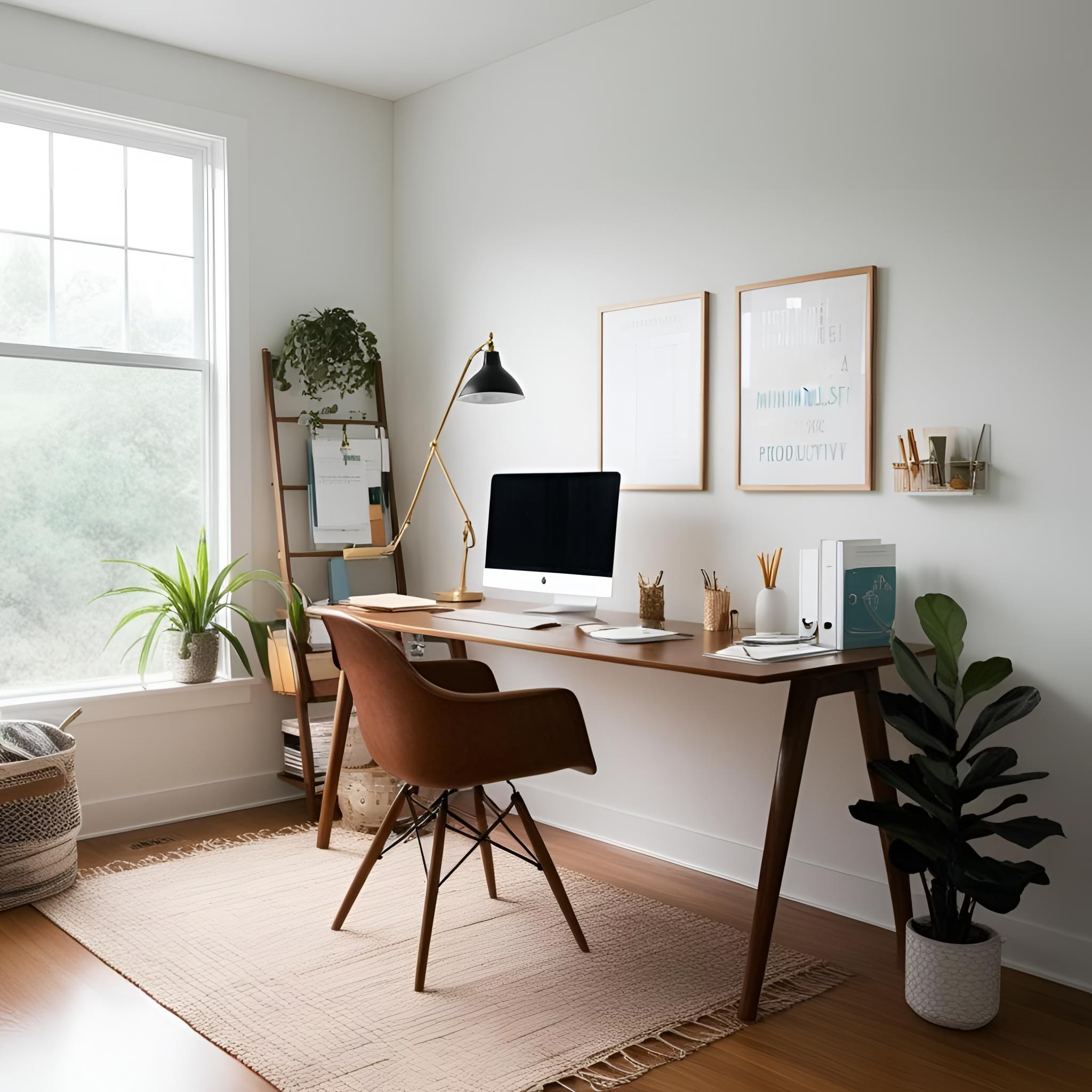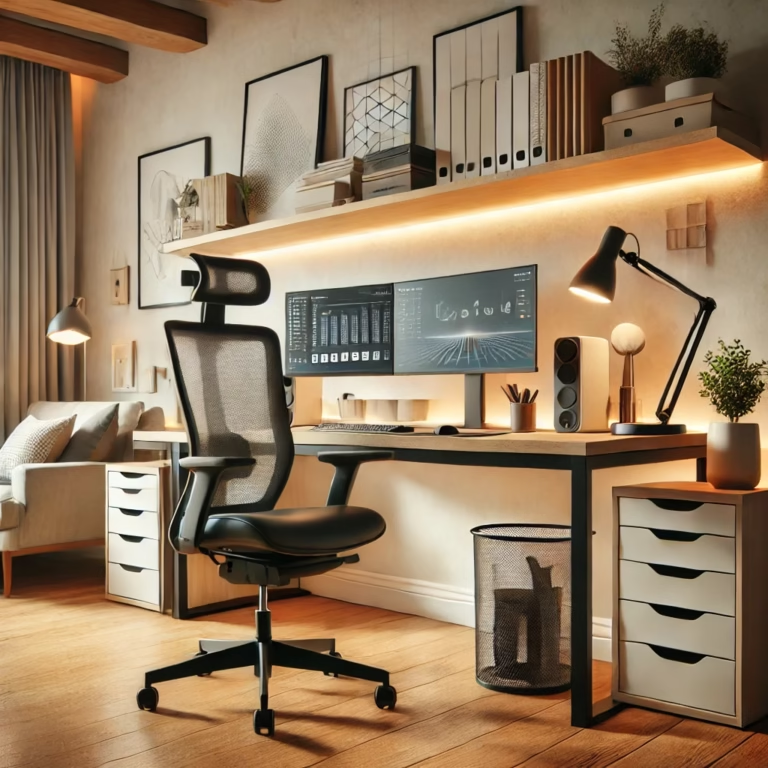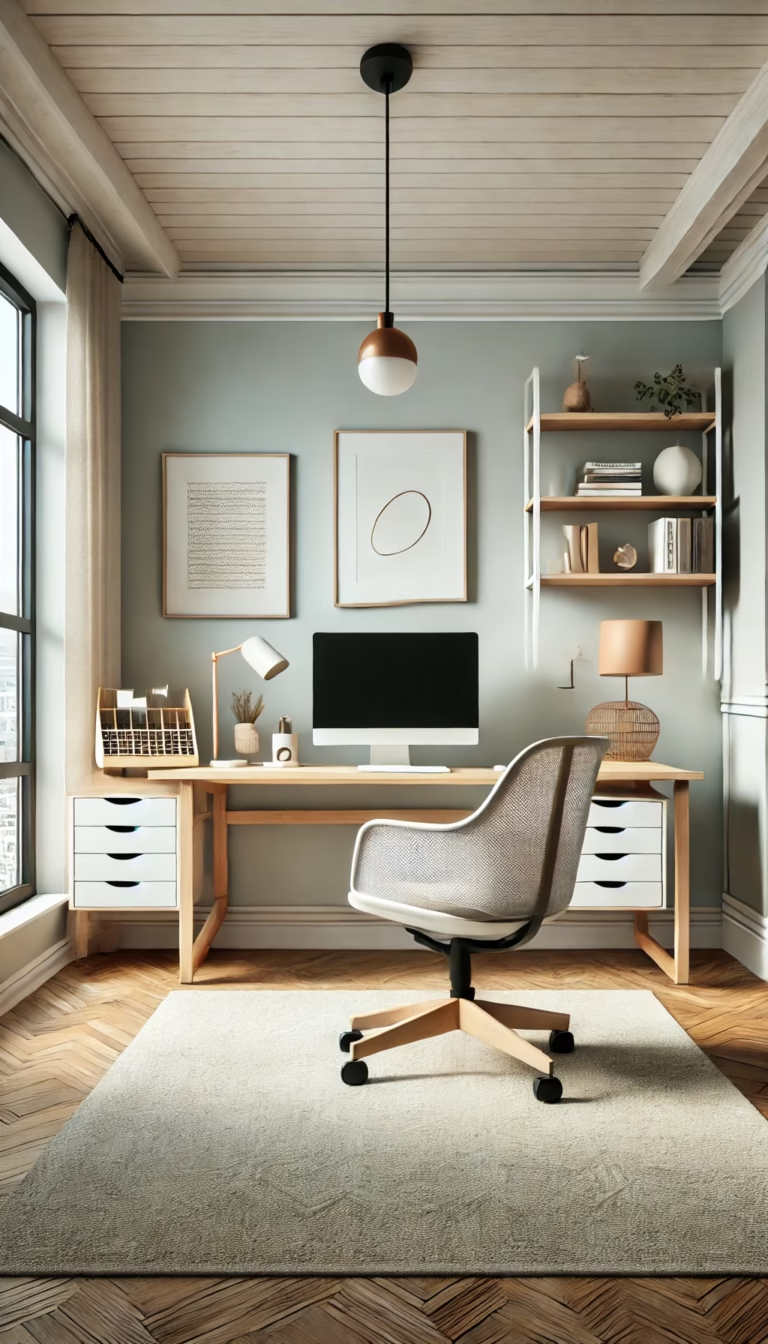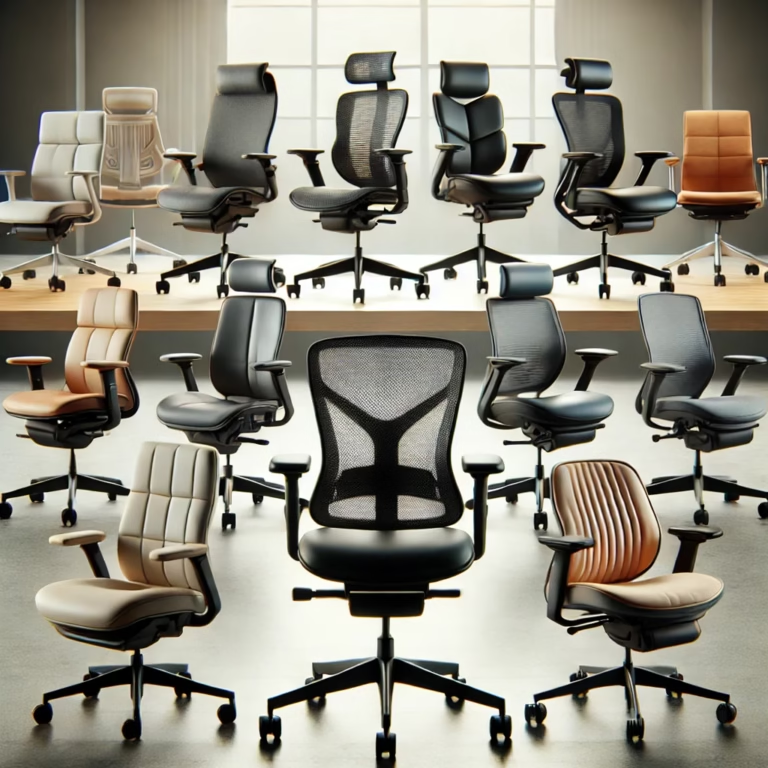Minimalist Home Office: A Guide to Clutter-Free, Functional Workspace Design
Imagine stepping into a workspace that feels calm, organized, and inspiring. A minimalist home office is more than just a trend—it’s a lifestyle choice that prioritizes simplicity, functionality, and mental clarity. By focusing on the essentials and eliminating distractions, a minimalist office can help you work smarter, stay focused, and enjoy your time at your desk. In this guide, we’ll explore how to create a minimalist home office that works for you.
What is a Minimalist Home Office?
A minimalist home office is a workspace designed with simplicity and functionality in mind. It’s about creating a clutter-free environment where every item has a purpose and a place. This approach not only enhances productivity but also fosters a sense of calm and focus, making it easier to tackle your tasks with clarity.
Why Minimalism Matters in Your Workspace
Clutter can be a major source of stress and distraction. According to a study published in the Journal of Neuroscience, physical clutter competes for your attention, reducing your ability to focus and process information (McMains & Kastner, 2011). A minimalist home office eliminates this chaos, allowing you to concentrate on what truly matters.

Benefits of a Minimalist Home Office
1. Enhanced Focus and Productivity
With fewer distractions, you can channel your energy into your work. A minimalist workspace helps you stay on task and complete projects more efficiently. Research from Princeton University found that clutter can overwhelm the visual cortex, making it harder to focus (Princeton University, 2011).
2. Reduced Stress and Anxiety
A clean, organized space can have a profound impact on your mental well-being. By removing unnecessary items, you create a calming environment that reduces stress and promotes relaxation.
3. Improved Creativity
Minimalism encourages intentionality. When your workspace is free of clutter, your mind has more room to think creatively and generate new ideas. A study in the Journal of Environmental Psychology found that minimalist environments can enhance creativity and problem-solving skills (Vohs et al., 2017).
4. Better Time Management
When everything has a designated place, you spend less time searching for items and more time working. A minimalist office helps you stay organized and efficient.

How to Create a Minimalist Home Office
Ready to transform your workspace? Follow these steps to create a minimalist home office that inspires focus and productivity:
1. Declutter Your Space
Start by removing anything that doesn’t serve a purpose. Keep only the essentials, such as your computer, notebook, and a few tools you use daily. Donate, recycle, or discard items you no longer need.
2. Choose Functional Furniture
Invest in furniture that is both stylish and practical. A simple desk with built-in storage, an ergonomic chair, and a few shelves can go a long way in keeping your space organized.
3. Opt for a Neutral Color Palette
Neutral colors like white, gray, and beige create a calming atmosphere. Add subtle pops of color with accessories like a plant or artwork to keep the space visually appealing.
4. Maximize Natural Light
Natural light can make your workspace feel more open and inviting. Position your desk near a window and use sheer curtains to let in as much light as possible.

Tips for Maintaining a Minimalist Home Office
1. Adopt a “One In, One Out” Rule
For every new item you bring into your workspace, remove an old one. This helps prevent clutter from creeping back in.
2. Use Hidden Storage
Keep your desk surface clear by using drawers, cabinets, or storage boxes to store items you don’t use daily.
3. Regularly Reassess Your Space
Set aside time each month to evaluate your workspace. Remove anything that no longer serves a purpose or brings you joy.
4. Embrace Digital Minimalism
Extend minimalism to your digital life by organizing files, deleting unused apps, and keeping your desktop clutter-free.
Conclusion
A minimalist home office is more than just a design choice—it’s a way to create a workspace that supports your goals and well-being. By focusing on simplicity and functionality, you can transform your office into a place of focus, creativity, and calm. Start small, declutter intentionally, and enjoy the benefits of a minimalist workspace.
Ready to create your own minimalist haven? Begin today and experience the joy of working in a space that truly inspires you.
References
- McMains, S., & Kastner, S. (2011). Interactions of top-down and bottom-up mechanisms in human visual cortex. Journal of Neuroscience, 31(3), 932-943. Link
- Princeton University. (2011). Clutter hampers productivity. Link
- Vohs, K. D., Redden, J. P., & Rahinel, R. (2017). Physical order produces healthy choices, generosity, and conventionality, whereas disorder produces creativity. Journal of Environmental Psychology, 49, 1-8. Link







